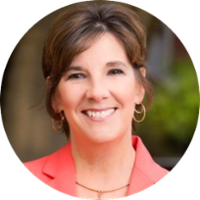Like most compliance officers, I receive compliance updates in my inbox every day from various vendors, compliance organizations, and of course the Office of Inspector General and Department of Justice. I always make sure to read all of the recent government settlements but maybe because of my background and love for the post-acute sector, I continue to notice how frequently the OIG and DOJ focus on the post-acute sector, and often more specifically on skilled nursing facilities.
For example, you may recall a recent video prepared by the OIG on the topic of abuse in nursing homes. This video focuses on the OIG’s continued concerns about patient abuse and neglect in nursing homes. The OIG spokesperson in the video was Brian Whitley, Regional Inspector General. Mr. Whitley discusses three primary areas of concerns that they uncover during their investigations, including the following:
- Lack of adequate staff, including insufficient staff and/or properly trained, along with a shortage of supplies at times
- Over-medicated residents
- Bad actors – personnel who have had previous issues, but somehow slipped through the system and are caring for patients in nursing homes today
In addition, several statistics stood out from the the OIG’s report. In 2016, Medicaid Fraud Control Units (MFCUs) had over 1,000 open investigations related to abuse and/or neglect in nursing homes and assisted living centers. Over 85% of nursing homes reported at least one allegation of abuse or neglect to the OIG in a one year-time span.
I think we can all agree that even one case of abuse or neglect of a nursing home resident is unacceptable, but I can tell you from my first-hand experience that owners and operators of nursing homes do not set out to hire staff who have criminal backgrounds or histories of licensure issues. They do not hire staff who are unkind or uncaring. Caring for the frail and elderly is a very difficult job and those that work in this industry have compassion, kindness, and patience that very few will ever understand if you haven’t walked in their shoes. Did you know that in 2015 there were 1,351,616 residents in over 15,500 certified nursing facilities in the United States? That means there are close to the same number of people caring for those 1.3 million residents.
Unfortunately, there will always be a “bad actor” as described by Mr. Whitley, but I can assure you there are a lot more “great people” caring for our loved ones in nursing homes than the handful of “bad actors” that seem to get all of the attention.
Reducing Unqualified and Abusive Nursing Home Employees
So what can you do to try to eliminate the “bad actors” from your nursing facilities or assisted living centers? First and foremost, make sure you have a robust pre-hire background screening process and a solid ongoing monitoring process in place.
Unfortunately, we do not have one central repository of all “bad actors” that we can search, so it is incumbent upon you as the compliance officer to ensure that you are checking all of the various databases to stay on top of the ever-changing lists of sanctioned and/or excluded persons. Until the licensing board takes action, the investigation is confidential and not public record. Due to the fact that the licensing investigation takes many months, the bad actor has plenty of time to switch jobs to stay ahead of the licensing board results.
Did you know there are currently 40 states with state exclusion lists, and that each one is required to report their exclusions to the OIG within 30 days? The OIG Exclusions Performance Standard 8(f) calls for all State Medicaid Fraud Control Units to transmit to the OIG for HHS, “for purposes of program exclusions under section 1128 of the Social Security Act, all pertinent information on MFCU convictions within 30 days of sentencing, including charging documents, plea agreements, and sentencing orders.” Id. p. 32648.
Did you know that all state exclusions are not contained in the OIG’s List of Excluded Individuals and Entities (LEIE)? Actually, in the first quarter of 2017, there were 55,554 individual exclusions in the 40 state exclusion databases and 29,230 individuals excluded in the OIG database. That means that only 52.6% of the individuals excluded in the state databases are reflected in the OIG LEIE.
Remember, these statistics just relate to specific State and Federal exclusions and do not address the myriad of licensure sanctions and revocations that exist. Have you thought about how you are monitoring licensure issues across all 50 states in your organization? Consider the following example and how you would or would not uncover this nurse in your organization:
A nurse is under investigation in one state but quickly transfers to a second state while the investigation is pending. Thanks to the slow progression of a licensure investigation, several months later the nursing license is revoked in a former state, but you had hired her before the licensure action was completed, so she never told you about the open investigation during the hiring process. In which case, you don’t know she just lost her license for patient abuse in a previous state.
How do you stay ahead of this? Would your current monitoring process catch this nurse? Unfortunately, those “bad actors” can be very creative when trying to stay ahead of investigations.
You may remember reading a DOJ release on July 6th about a nurse imposter in Texas who plead guilty to five counts of making false statements relating to health care. She was employed as a registered nurse at two hospitals and three nursing homes in five different Texas cities over seven months. According to the DOJ press release, she would leave the facility as soon as an employer started to ask questions.
Now might be a good time to ask yourself, what protocols do I have in place to catch this type of “bad actor.” In my role as Chief Compliance Officer, I utilized a third-party vendor partner to monitor all of my exclusions and sanctions which included state, federal and all licenses across all 50 states. I knew within my organization I could never handle that task alone. We had over 25,000 employees caring for our residents, so we had a lot to monitor.
If you are a skilled nursing facility compliance officer, remember that the new Requirements of Participation Section 483.12 Freedom from Abuse, Neglect, and Exploitation addresses the employment or engagement of certain individuals. It states that the facility must not employ or otherwise engage individuals who meet the following criteria:
- Have been found guilty of abuse, neglect, exploitation, misappropriation of property, or mistreatment by a court of law.
- Have had a finding entered into the State nurse aide registry concerning abuse, neglect, exploitation, mistreatment of residents or misappropriation of their property.
- Have a disciplinary action in effect against his or her professional license by a state licensure body as a result of a finding of abuse, neglect, exploitation, mistreatment of residents or misappropriation of resident property.
In the post-acute sector and specifically in nursing facilities, we are highly regulated and continuously scrutinized to ensure quality care is being provided to our residents. Quality outcomes and patient safety are our number one priorities.
Summary
As a compliance officer, it is critical to have the right monitoring procedures in place and be assured that staff is properly executing these procedures. If you aren’t sure how strong your processes are, give us a call, and we will help you review and find the best solution. At ProviderTrust we are here to help you get rid of the “bad actors” and focus on the delivery of quality care your patients deserve!
Written by Donna Thiel, Chief Compliance Officer
Donna Thiel is the Director of our Compliance Integrity team, a consulting division of ProviderTrust. Donna works with compliance officers across the country to help reduce the stress and anxiety of this very difficult role.










